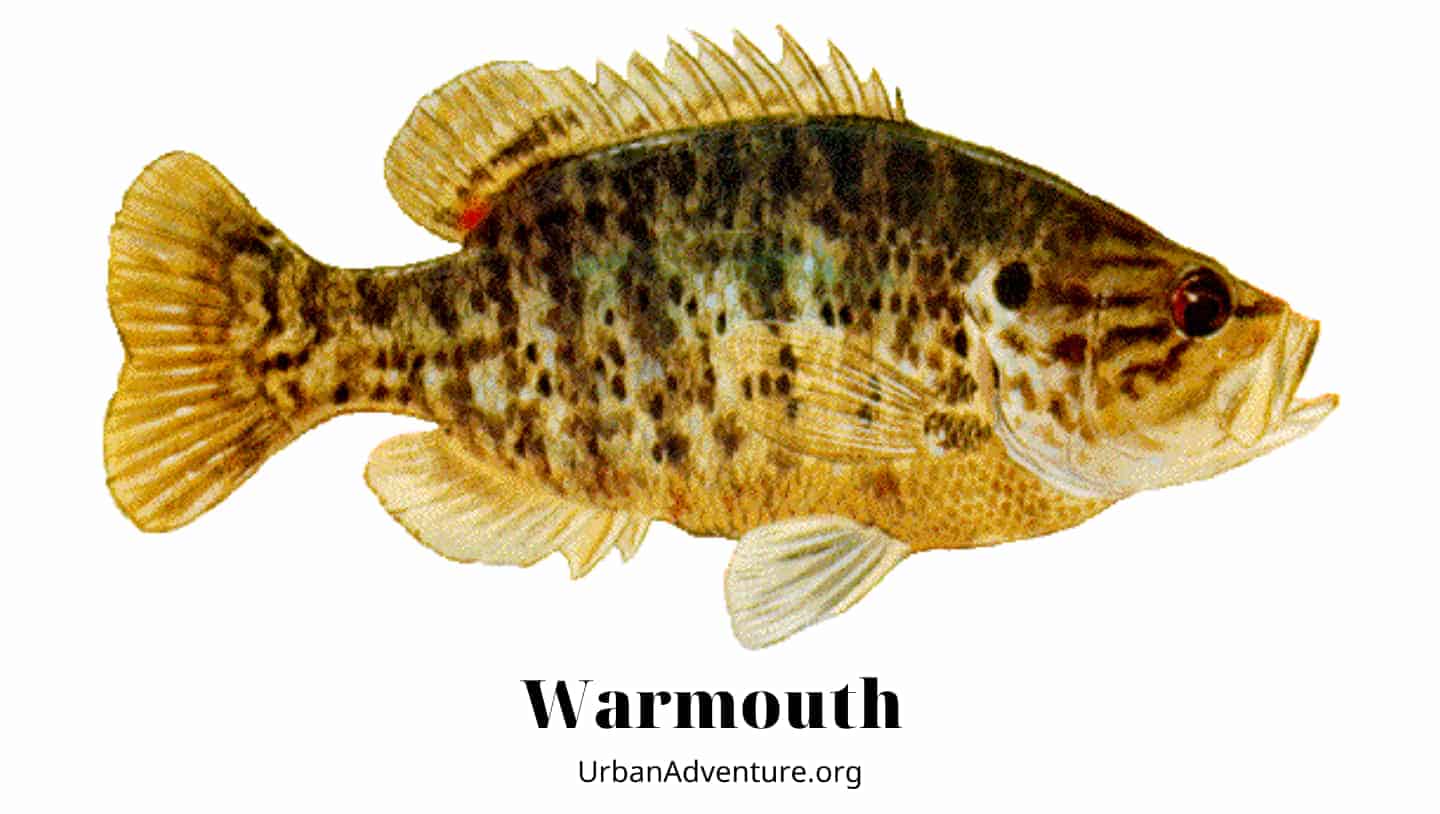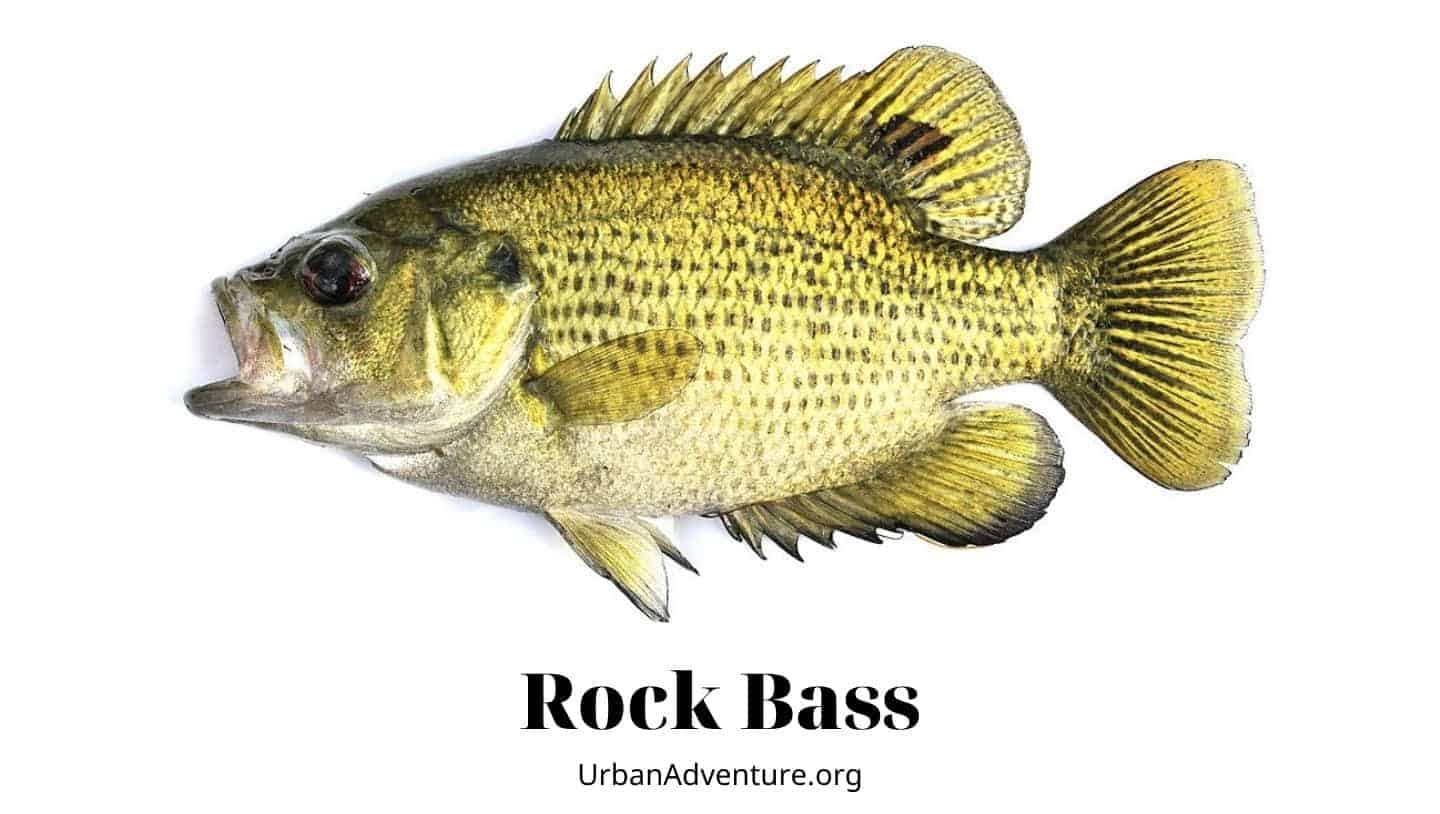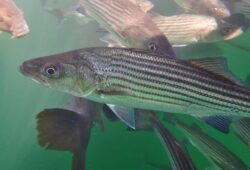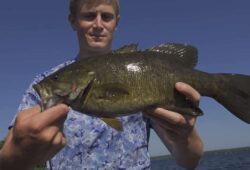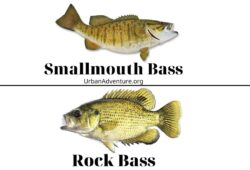If you spend any amount of time fishing in rivers, creeks, and lakes, you very well might have asked yourself what the difference between warmouth and rockbass are, since they’re two of the most popular freshwater species. In truth, these two panfish species get confused with one another quite often by even the most experienced anglers.
In this short article, we’re going in depth on everything that makes these two species unique from one another, as well as going over a few important biological facts about them that could help you on your next fishing trip.
Contents
Are Rock and Warmouth Bass The Same?
Rock bass and warmouths are not the same. Both are species under the sunfish family, however, they are their own unique species, with their own habits, spawning patterns, and diet not to mention distribution areas.
How To Tell The Difference
Dorsal Spines
Dorsal spines are the long spines that stick out from the back of the fish. The purpose of these spines are to stabilize the fish as they swim through the water, as they help them to resist being rolled by currents and aid in making sudden turns.
Rock bass and warmouts have different numbers of dorsal spines, with the rock bass having 11-13 and the warmouth having only 10.
Anal Fin Spines
Anal spines are located on the anal fin of fish, which is the fin closest to the tail end of the body on the ventral side. Anal spines serve the same purpose as dorsanl spines do and like dorsal spines, rock bass have more of them. They have 5-7 of these spines while warmouths have 3.
Coloration
Neither species of bass has an out-of-this-world coloration. Both have muted, earthy, and natural tones, however, they are not exactly the same when it comes to coloration and pattern. More specifically,
The warmouth has a series of dark lines and streaks around its eyes and mouth, while the rock bass does not.
Size
In general, rock bass are 12 inches in length, while warmouth are 4-10 inches in size. Even when this isn’t precise, the rock bass is usually a bit larger than the warmouth, although this shouldn’t be the factor that you use to tell the species apart because it can differ so much.
Read More: Are Smallmouth Bass Good To Eat?
About Warmouth
Habitat
Warmouth are found in warm waters all over North America. Particularly, though, they can be found in copious amounts in the Mississippi
River and the Great Lakes, Atlantic, and Lake Erie drainages. They can also be found in Mexico.
These areas are slow-moving and full of vegetation in which the fish can hide.
Shape and color
Warmouths have thick, oblong-shaped bodies that range in color from a light brass to olive-green. They have dark bar-like patterns that give the fish a mottled look. More specifically, they have vertical stripes going down from their dorsal spines and horizontal stripes going from their eyes across their gill cover.
Their eyes are red and they have a big mouth, with their jaw extending to the middle/upper portion of their eyes.
Diet
Warmouth prefer to feed during the morning, filling themselves with insects, crayfish, small fish, and shrimp. They are carnivorous and said to be very aggressive eaters, with anglers reporting that the warmouth often goes after bait intended for larger fish such as the smallmouth bass.
Lifespan
These hardy fish typically live for 3-8 years. They reach sexual maturity at 3-4 inches in size and spawn during the spring season, with males creating nests for their spawn by using their tails.
Females can lay up to 63,000 eggs during a single season, all of which will hatch within 3-4 days of being fertilized and incubated. The hatching fry will leave the nest within 6 days or after they have reached 1-2 inches in length. Males will protect the nest of unhatched eggs using circling behavior, warding off other fish, egg eating snakes, and even the female who laid the eggs.
About Rock Bass
Habitat
Rock bass inhabit a lot of the same waters as the warmouth. However, they are also found in Texas and the northern parts of Georgia,
Florida, and Alabama.
They prefer clear, rocky water with a good amount of vegetation for hiding in. The water they live in is warm and slow moving, much like with the warmouth. They can be found closer to the shoreline than many other species.
Shape and color
Rock bass have short, robust bodies that are olive-green on the top and gold or brassy in appearance on the sides. The side scales of the rock bass’s body have a spotted pattern that seems to give the fish a striped look.
They have vertical stripes extending from the dorsal fins halfway down the body where they meet the spotted-stripe pattern mentioned previously.
Diet
Rock bass are carnivorous, preferring to feed on minnows, smaller fish, yellow perch, crustaceans, and insects. They have been known to eat their young on occasion, as well.
This species feeds at night and in the early morning.
Lifespan
Rock bass live 5-8 years in the wild but there have been reports of some fish living as long as 18 years. They reach sexual maturity when they hit 2 or 3 years of age and will then go on to mate with multiple partners each spawning season. Typically, they will mate in the spring and in early summer.
Male rock bass make nests to which they attract the female, who then lays her eggs. The eggs will hatch within 2 to 6 days, depending on the temperature of the water. The warmer the temperature is, the quicker the eggs will begin the hatching process. Until they hatch, the male will keep watch over the nest using circling behavior, chasing the female away quickly after she lays her eggs.


